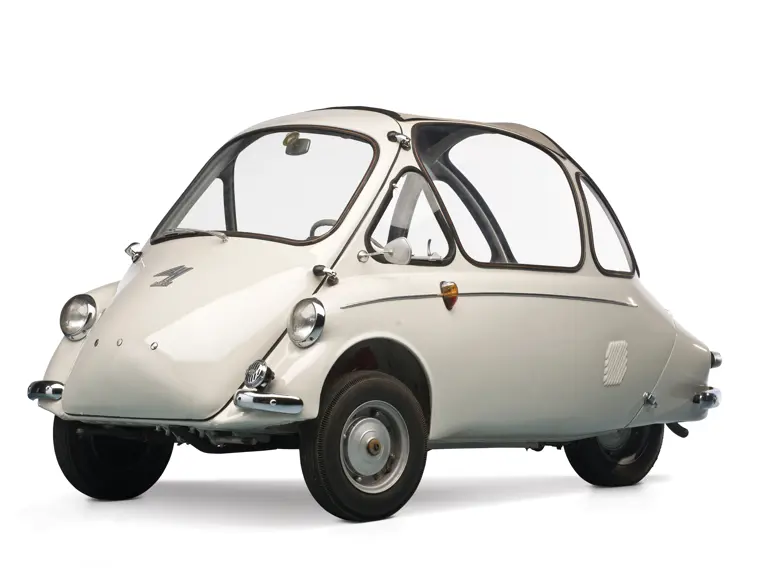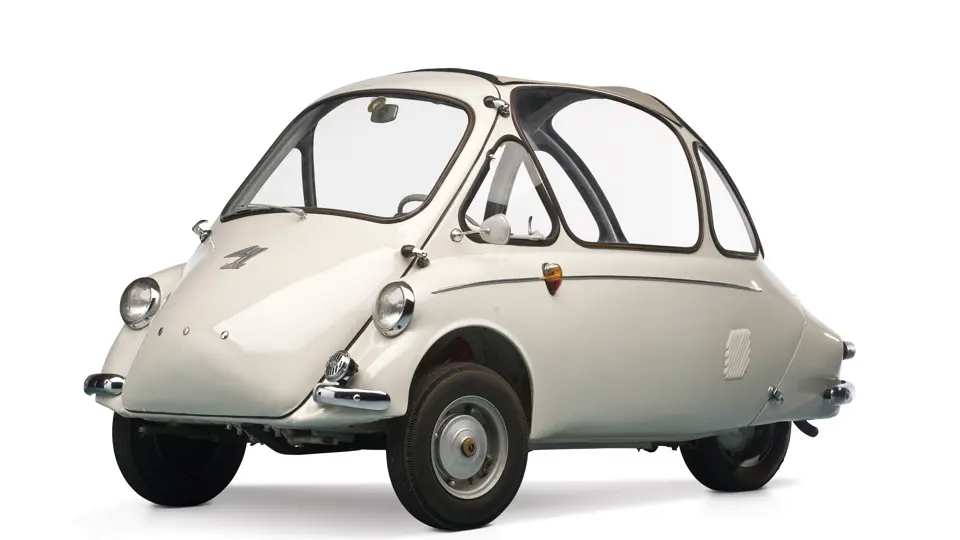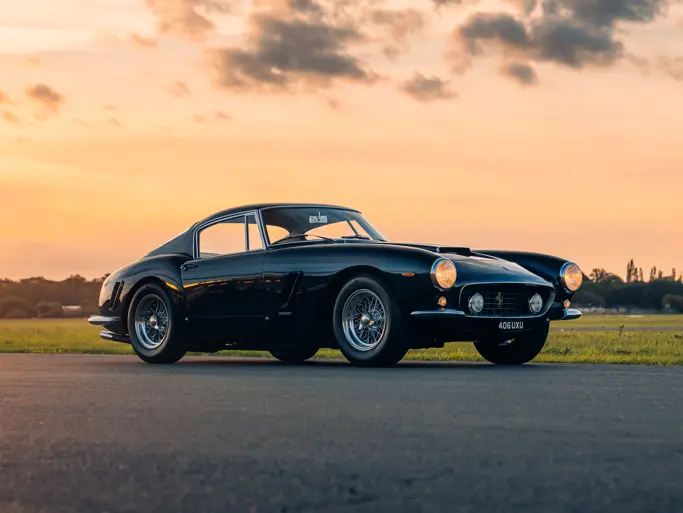A German three-wheeled microcar with desirable features.
SPECIFICATIONS
Manufacturer: Ernst Heinkel Fahrzeugbau GmbH
Origin: Stuttgart, Germany
Production: 6,438
Motor: Heinkel 1-cyl, 4-stroke
Displacement: 173 cc
Power: 9.3 hp
Length: 8 ft. 9 in.
Identification No. 305056
Professor Ernst Heinkel was a highly respected aircraft constructor and one of the “trio,” including Messerschmitt and BMW, involved in the aircraft industry (BMW made airplane engines) who found themselves unable to work in their field after the war. All three would go on to produce the most iconic microcars of the post-war recovery era.
As each of the companies struggled to rebuild their plants, Heinkel built motors that were supplied to a number of companies, like Tempo and Champion. He found a solid direction in the manufacture of scooters, which were the right product at the right time and were so highly regarded that they continued to be made into the sixties. His newly-founded vehicle division was situated in the former Pfalz aircraft works, and it was here that work on his Kabine would commence.
The Kabine was a rethinking of the Iso Isetta using aircraft principles. Rather than being a blatant copy with a few changes, the design painstakingly evolved over five prototypes, which changed significantly from one to the next. Overall, the main difference was the use of a chassis-less monocoque body, which meant a 220 pound weight saving over the BMW. This meant a smaller motor could be used. The 150 model was fitted with the 174-cubic centimeter 407 BO (and later the 407 B1) motor from the Type 103 A-1 Heinkel Tourist scooter but with different gear ratios and a reverse. Gear operation was via flexible Bowden cable, and the gear lever worked in a notched slot, not a gate. The hinged steering column of the Iso was patented, so it was not repeatable. The motor was located centrally and more behind the cabin, resulting in a short tail, which made the Kabine look more like a cross between the Isetta and the Messerschmitt.
Despite the superficial similarity to the BMW Isetta, the Heinkel is really quite a different animal, and it occupies a different place on the microcar collector’s palette. Its brief production run and high attrition rate mean that it is very much more difficult to find than the Isetta. This car is a fine original German example of the Type 150 three-wheeler produced from March 1956 to February 1958. It is finished in correct Grecian White with an original brown and plaid interior that includes parcel netting. It has the correct, difficult-to-find, Hella blinkers. The car has the slightly longer tail that was introduced in February of 1957.



 | Madison, Georgia
| Madison, Georgia


